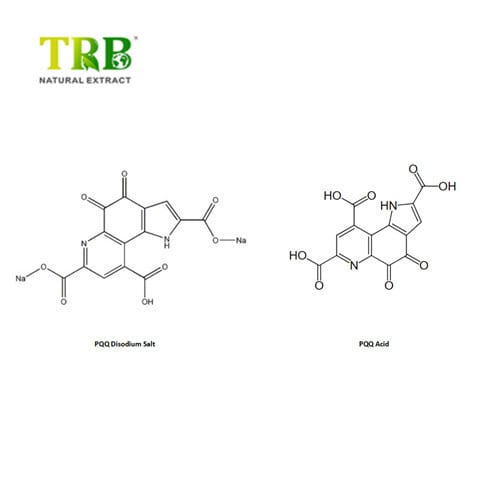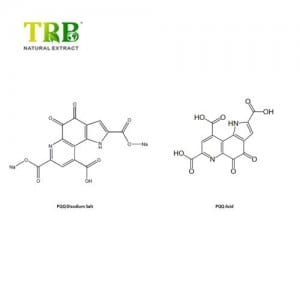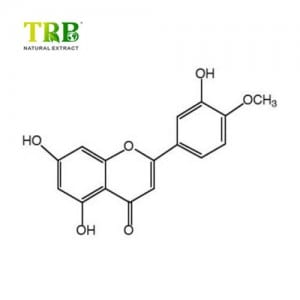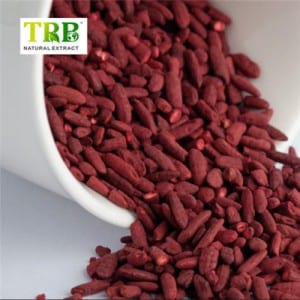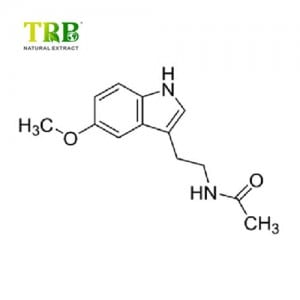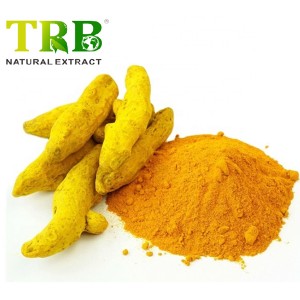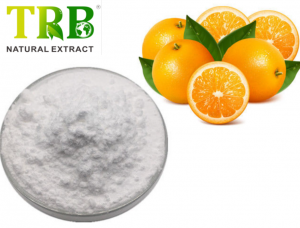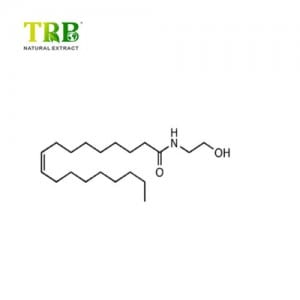પાયરોલોક્વિનોલિન ક્વિનોન (PQQ), જેને મેથોક્સી પ્લેટિનમ તરીકે પણ ઓળખવામાં આવે છે, તે રેડોક્સ કોફેક્ટર છે.તે માટી, કિવિફ્રૂટ, ખોરાક અને માનવ સ્તન દૂધમાં અસ્તિત્વ ધરાવે છે.સીધી રીતે કહીએ તો, "પાયરોલોક્વિનોલિન ક્વિનોન" શબ્દ થોડો અજીબોગરીબ છે, તેથી મોટાભાગના લોકો PQQ સંક્ષેપનો ઉપયોગ કરવાનું પસંદ કરે છે.વૈજ્ઞાનિક જર્નલ નેચરે 2003 માં કસહારા અને કાટો દ્વારા એક પેપર પ્રકાશિત કર્યો, જેમાં PQQ ને નવું વિટામિન માનવામાં આવતું હતું.જો કે, પાયરોલોક્વિનોલિન ક્વિનોન વિશે વધુ સંશોધન કર્યા પછી, સંશોધકોએ નક્કી કર્યું કે તેમાં કેટલાક વિટામિન જેવા ગુણો હોવા છતાં, તે માત્ર સંબંધિત પોષક તત્વો છે.PQQ નો ઉપયોગ રેડોક્સ પ્રક્રિયામાં સહ-પરિબળ અથવા એન્ઝાઈમેટિક પ્રમોટર તરીકે થઈ શકે છે.રેડોક્સમાં તેની ભાગીદારીને કારણે PQQ ચોક્કસ એન્ટીઑકિસડન્ટ અસર ધરાવે છે.
ઉત્પાદન નામ:પાયરોલોક્વિનોલિન ક્વિનોન ડિસોડિયમ મીઠું
CAS નંબર: 122628-50-6/ 72909-34-3
મોલેક્યુલર વજન: 374.17/ 330.21
મોલેક્યુલર ફોર્મ્યુલા: C14H4N2Na2O8/ C14H6N2O8
સ્પષ્ટીકરણ: PQQ ડિસોડિયમ મીઠું 99%; PQQ એસિડ 99%
દેખાવ: લાલ નારંગીથી લાલ રંગનો બ્રાઉન ફાઇન પાવડર.
એપ્લિકેશન: આહાર પૂરવણી અને ન્યુટ્રાસ્યુટિકલ્સ માટે વ્યાપકપણે ઉપયોગમાં લેવાય છે.
સંગ્રહ: હળવા અને શુષ્ક સ્થિતિમાં સંગ્રહિત, સીધા સૂર્યથી દૂર રહો.
પાયરોલોક્વિનોલિન ક્વિનોનખોરાક સ્ત્રોતો
PQQ કુદરતી રીતે મોટાભાગના વનસ્પતિ ખોરાક, ફળો અને શાકભાજી (ટ્રેસ) માં અસ્તિત્વ ધરાવે છે, અને આથોવાળા સોયાબીન ઉત્પાદનો, જેમ કે કિવિફ્રૂટ, લીચી, લીલી કઠોળ, ટોફુ, રેપસીડ, સરસવ, લીલી ચા (કેમેલીયા) માં PQQ ના પ્રમાણમાં ઊંચા સ્તરો શોધી શકાય છે. , લીલા મરી, પાલક, વગેરે.
જી.હૉગને જાણવા મળ્યું કે તે નિકોટિનામાઇડ અને ફ્લેવિન પછી બેક્ટેરિયામાં ત્રીજું રેડોક્સ કોફેક્ટર હતું (જોકે તેણે ધાર્યું હતું કે તે નેપ્થોક્વિનોન છે).એન્થોની અને ઝટમેનને ઇથેનોલ ડિહાઇડ્રોજેનેઝમાં અજાણ્યા રેડોક્સ કોફેક્ટર્સ પણ મળ્યાં.1979માં, સેલિસ્બરી અને તેમના સાથીદારો તેમજ ડ્યુઈન અને તેમના સાથીઓએ આ સ્યુડો આધારને ડાયનોફ્લેજેલેટ્સના મિથેનોલ ડિહાઈડ્રોજેનેઝમાંથી કાઢ્યો અને તેની પરમાણુ રચનાને ઓળખી.અડાચી અને તેના સાથીઓએ શોધી કાઢ્યું કે એસીટોબેક્ટરમાં PQQ પણ છે.
ની ક્રિયા કરવાની પદ્ધતિપાયરોલોક્વિનોલિન ક્વિનોનe
પાયરોલોક્વિનોલિન ક્વિનોન (PQQ) એ એક નાનું ક્વિનોન પરમાણુ છે, જે રેડોક્સ અસર ધરાવે છે, તે ઓક્સિડન્ટ (એન્ટીઓક્સિડન્ટ) ઘટાડી શકે છે;તે પછી ગ્લુટાથિઓન દ્વારા સક્રિય સ્વરૂપમાં પુનઃપ્રાપ્ત થાય છે.તે પ્રમાણમાં સ્થિર લાગે છે કારણ કે તે અવક્ષય પહેલા હજારો ચક્રમાંથી પસાર થઈ શકે છે, અને તે નવું છે કારણ કે તે કોશિકાઓના પ્રોટીન માળખા સાથે સંબંધિત છે (કેટલાક એન્ટીઑકિસડન્ટો, મુખ્ય કેરોટીનોઈડ જેમ કે બીટા-કેરોટીન અને એસ્ટાક્સાન્થિન, કોષોના ચોક્કસ વિસ્તારોમાં સ્થિત છે, જ્યાં તેઓ પ્રમાણસર વધુ એન્ટીઑકિસડન્ટ ભૂમિકા ભજવે છે).નિકટતાને કારણે, કોષ પટલ પર કેરોટીનોઇડ્સ જેવા પ્રોટીનની નજીક PQQ ભૂમિકા ભજવે છે.
આ રેડોક્સ કાર્યો પ્રોટીન કાર્યો અને સિગ્નલ ટ્રાન્સડક્શન માર્ગોને બદલી શકે છે.જો કે વિટ્રો (જીવંત મોડલની બહાર)માં ઘણા આશાસ્પદ અભ્યાસો છે, તેમ છતાં PQQ સપ્લિમેન્ટેશનના કેટલાક આશાસ્પદ પરિણામો મુખ્યત્વે કેટલાક સિગ્નલ ટ્રાન્સડક્શન પાથવેઝ અથવા મિટોકોન્ડ્રિયામાં તેના ફાયદાઓને બદલવા સાથે સંબંધિત છે.(વધુ ઉત્પાદન કરો અને કાર્યક્ષમતામાં સુધારો કરો).
તે બેક્ટેરિયામાં એક સહઉત્સેચક છે (તેથી બેક્ટેરિયા માટે, તે બી-વિટામિન્સ જેવું છે), પરંતુ તે મનુષ્યો સુધી વિસ્તરેલું લાગતું નથી.આ માનવોને લાગુ પડતું ન હોવાથી, 2003ના નેચરમાં એક વૈજ્ઞાનિક જર્નલનો લેખ, એવી દલીલ કરે છે કે PQ એ વિટામિન સંયોજન છે તે વિચાર જૂનો છે અને શ્રેષ્ઠ રીતે "વિટામિન જેવા પદાર્થ" તરીકે ગણવામાં આવે છે.
મિટોકોન્ડ્રિયા પર PQQ ની અસર કદાચ સૌથી નોંધપાત્ર છે, જે ઊર્જા (ATP) પ્રદાન કરે છે અને કોષ ચયાપચયનું નિયમન કરે છે.સંશોધકોએ મિટોકોન્ડ્રિયા પર PPQ ની અસરનું વ્યાપકપણે અવલોકન કર્યું છે અને જાણવા મળ્યું છે કે PQQ મિટોકોન્ડ્રિયાની સંખ્યામાં વધારો કરી શકે છે અને મિટોકોન્ડ્રિયાની કાર્યક્ષમતામાં પણ સુધારો કરી શકે છે.આ એક મહત્વપૂર્ણ કારણ છે કે શા માટે PPQ ખૂબ ઉપયોગી છે.PQQ ધરાવતા ઉત્સેચકોને ગ્લુકોઝ ડિહાઈડ્રોજેનેઝ તરીકે ઓળખવામાં આવે છે, ક્વિનોઆ પ્રોટીન કે જેનો ઉપયોગ ગ્લુકોઝ સેન્સર તરીકે થાય છે.
Pyrroloquinoline Quinone ના ફાયદા
સ્વસ્થ જીવન માટે મિટોકોન્ડ્રિયાનું સર્વશ્રેષ્ઠ હોવું એટલું જરૂરી છે કે તમે ppq લેતી વખતે ઘણા ફાયદા અનુભવી શકો છો.અહીં પાયરોલોક્વિનોલિન ક્વિનોન ફાયદાઓ વિશેના કેટલાક સૌથી નોંધપાત્ર છે.
સેલ એનર્જી વધારવી
કારણ કે મિટોકોન્ડ્રિયા કોષો માટે ઊર્જા ઉત્પન્ન કરે છે, અને PQQ મિટોકોન્ડ્રિયાને વધુ અસરકારક રીતે કામ કરવામાં મદદ કરે છે, કોષોમાં ઊર્જા સમગ્ર રીતે વધે છે;આ પાયરોલોક્વિનોલિન ક્વિનોન મિટોકોન્ડ્રીયલ મિકેનિઝમ છે.બિનઉપયોગી સેલ્યુલર ઊર્જા શરીરના અન્ય ભાગોમાં વાળવામાં આવે છે.જો તમારા શરીરમાં આખો દિવસ શક્તિનો અભાવ હોય, અથવા તમે થાકેલા અથવા સુસ્તી અનુભવો છો, તો PPQ ની વધેલી શક્તિ તમારા માટે મહત્વપૂર્ણ છે.એક અભ્યાસમાં જાણવા મળ્યું છે કે PQQ લીધા પછી, ઉર્જા સમસ્યાઓની જાણ કરનારા વિષયોમાં થાકનું સ્તર નોંધપાત્ર રીતે ઓછું હતું.જો તમે તમારી ઊર્જા વધારવા માટે કંઈક શોધી રહ્યા છો, તો PQQ તેમાં મદદ કરી શકે છે.
જ્ઞાનાત્મક પતન અટકાવવું
વિજ્ઞાનના વિકાસ સાથે, વૈજ્ઞાનિકોએ શોધી કાઢ્યું છે કે ચેતા વૃદ્ધિ પરિબળ (NGF) વૃદ્ધિ અને પુનઃપ્રાપ્ત કરી શકે છે.તે જ સમયે, PQQ ની NGF પર સકારાત્મક અસર જોવા મળે છે અને ચેતા વૃદ્ધિમાં 40 ગણો વધારો થાય છે.નવા ચેતાકોષોની રચના અને જાળવણી માટે NGF જરૂરી છે, અને તે ક્ષતિગ્રસ્ત ચેતાકોષોને પુનઃસ્થાપિત કરી શકે છે જે જ્ઞાનાત્મક કાર્યને અટકાવી શકે છે.ન્યુરોન્સ એ કોષો છે જે માહિતીનું પ્રસારણ કરે છે, તેથી આપણું મગજ પોતાની અને શરીરના અન્ય ભાગો વચ્ચે વાતચીત કરી શકે છે.ચેતાકોષોની ગુણવત્તા અને જથ્થામાં સુધારો કરવાથી સમજશક્તિમાં સુધારો થઈ શકે છે.તેથી, PQQ માં ટૂંકા ગાળાનો સુધારો છે.
કાર્ડિયોવેસ્ક્યુલર આરોગ્યને ટેકો આપવો
પાયરોલોક્વિનોલિન ક્વિનાઇન એન્ટીઑકિસડન્ટ અને મિટોકોન્ડ્રીયલ સપોર્ટ પૂરો પાડે છે.અભ્યાસોએ દર્શાવ્યું છે કે PQQ અને CoQ10 બંને મ્યોકાર્ડિયલ કાર્ય અને સેલ્યુલર ઓક્સિજનના યોગ્ય ઉપયોગને સમર્થન આપે છે.પાયરોલોક્વિનોલિન ક્વિનોન તેના કાયાકલ્પ દ્વારા ઓક્સિડેટીવ તણાવને અટકાવે છે.
અન્ય અસરકારકતા:
ઉપર સૂચિબદ્ધ ત્રણ મુખ્ય લાભો સિવાય, PQQ અન્ય ઓછા જાણીતા લાભો પ્રદાન કરે છે.PQQ શરીરના સોજાને દૂર કરવામાં, તમારી ઊંઘને બહેતર બનાવવામાં અને પ્રજનન ક્ષમતામાં સુધારો કરવામાં ભૂમિકા ભજવી શકે છે, પરંતુ ચોક્કસ તારણો કાઢવા માટે વધુ સંશોધનની જરૂર છે.જેમ જેમ સંશોધન આગળ વધે છે તેમ, PQQ લેવાના વધુ ફાયદાઓ શોધી શકાય છે.
Pyrroloquinoline Quinone ની માત્રા
હાલમાં, કોઈપણ સરકાર અથવા WHO એ પાયરોલોક્વિનોલિન ક્વિનોન ડોઝ નક્કી કર્યો નથી.જો કે, કેટલીક વ્યક્તિઓ અને સંસ્થાઓએ પાયરોલોક્વિનોલિન ક્વિનોન પાવડરના શ્રેષ્ઠ ડોઝ પર ઘણા જૈવિક પરીક્ષણો અને માનવ પરીક્ષણો કર્યા છે.વિષયોની શારીરિક કામગીરીનું અવલોકન અને સરખામણી કરીને, તે તારણ કાઢ્યું છે કે PQQ ની શ્રેષ્ઠ માત્રા 20 mg-50 mg છે.જો કોઈ પ્રશ્નો બાકી હોય તો હંમેશા તમારા ડૉક્ટરનો સંદર્ભ લો.જેમ કે biopqq pyrroloquinoline quinone disodium salt.
PQQ ની આડ અસરો
2009 થી, ફૂડ એન્ડ ડ્રગ એડમિનિસ્ટ્રેશન (FDA) દ્વારા ઔપચારિક સૂચના પછી યુનાઇટેડ સ્ટેટ્સમાં PQQ Na 2 ધરાવતા આહાર પૂરવણીઓનું વેપારીકરણ કરવામાં આવ્યું છે, અને કોઈ પ્રતિકૂળ પ્રતિક્રિયાઓ નોંધવામાં આવી નથી.જો તમે તમારા આહારમાં પાયરોલોક્વિનોલિન ક્વિનોન સપ્લિમેન્ટ્સ ઉમેરવા માંગતા હો, તો એક વાત યાદ રાખવી જરૂરી છે.અસર પેદા કરવા માટે તેને વધુ પડતા PQQ ની જરૂર પડતી નથી, તેથી મોટા ભાગના ડોઝને ન્યૂનતમ શ્રેણીમાં રાખવામાં આવે છે.તેથી, મોટાભાગના લોકોએ કોઈપણ Pyrroloquinoline Quinone આડઅસરો વિશે ચિંતા કરવાની જરૂર નથી.(તે તમે પાયરોલોક્વિનોલિન ક્વિનોન PQQ સપ્લિમેન્ટ ખરીદ્યું છેબાઝાર)
| TRB ની વધુ માહિતી | ||
| Rઅનુમાન પ્રમાણપત્ર | ||
| USFDA, CEP, કોશર હલાલ GMP ISO પ્રમાણપત્રો | ||
| વિશ્વસનીય ગુણવત્તા | ||
| લગભગ 20 વર્ષ, 40 દેશો અને પ્રદેશો નિકાસ કરો, TRB દ્વારા ઉત્પાદિત 2000 થી વધુ બેચમાં ગુણવત્તાની કોઈ સમસ્યા નથી, વિશિષ્ટ શુદ્ધિકરણ પ્રક્રિયા, અશુદ્ધતા અને શુદ્ધતા નિયંત્રણ યુએસપી, ઇપી અને સીપીને પૂર્ણ કરે છે. | ||
| વ્યાપક ગુણવત્તા સિસ્ટમ | ||
|
| ▲ગુણવત્તા ખાતરી સિસ્ટમ | √ |
| ▲ દસ્તાવેજ નિયંત્રણ | √ | |
| ▲ માન્યતા સિસ્ટમ | √ | |
| ▲ તાલીમ પ્રણાલી | √ | |
| ▲ આંતરિક ઓડિટ પ્રોટોકોલ | √ | |
| ▲ સપ્લર ઓડિટ સિસ્ટમ | √ | |
| ▲ સાધનો સુવિધાઓ સિસ્ટમ | √ | |
| ▲ સામગ્રી નિયંત્રણ સિસ્ટમ | √ | |
| ▲ ઉત્પાદન નિયંત્રણ સિસ્ટમ | √ | |
| ▲ પેકેજિંગ લેબલીંગ સિસ્ટમ | √ | |
| ▲ લેબોરેટરી કંટ્રોલ સિસ્ટમ | √ | |
| ▲ ચકાસણી માન્યતા સિસ્ટમ | √ | |
| ▲ રેગ્યુલેટરી અફેર્સ સિસ્ટમ | √ | |
| સંપૂર્ણ સ્ત્રોતો અને પ્રક્રિયાઓને નિયંત્રિત કરો | ||
| તમામ કાચો માલ, એસેસરીઝ અને પેકેજીંગ મટીરીયલ્સનું કડક નિયંત્રણ કરે છે. યુએસ ડીએમએફ નંબર સાથે પસંદગીનો કાચો માલ અને એસેસરીઝ અને પેકેજીંગ મટીરીયલ સપ્લાયર. પુરવઠાની ખાતરી તરીકે કેટલાક કાચા માલના સપ્લાયર. | ||
| ટેકો આપવા માટે મજબૂત સહકારી સંસ્થાઓ | ||
| વનસ્પતિશાસ્ત્રની સંસ્થા/સૂક્ષ્મ જીવવિજ્ઞાનની સંસ્થા/વિજ્ઞાન અને ટેકનોલોજીની એકેડેમી/યુનિવર્સિટી | ||
